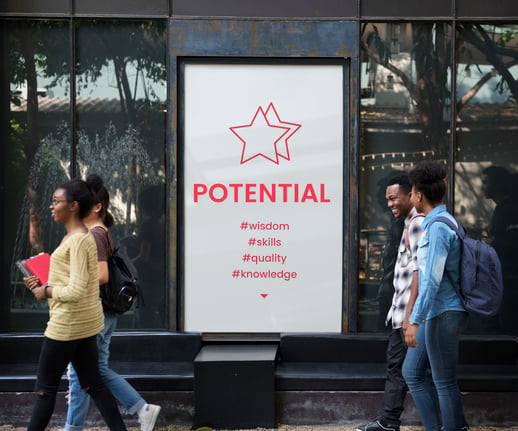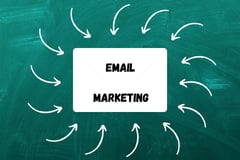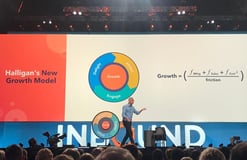Index Content
Let's start at the beginning, a hashtag is a tag that is used on social networks to group related content, the group is preceded by the # symbol, known as a hashtag. This concept is linked to the group, so clicking on it can direct you to similar content. They are a key element to increase presence and visibility as a brand, improve search and create successful campaigns.
They have a special function in social networks, as they act as a tool for grouping content, becoming a creator of categories or sets. They serve as a meter or organiser within social networks. Anyone can add their content to that group, so all users participate.
When you search for a hashtag, all the tweets, Instagram posts, Facebook posts, TikTok or whatever platform contains the hashtag are displayed. All the creations on the web with the same hashtag are connected and grouped by an invisible thread. This makes it a tool to boost your Inbound marketing strategy, as they facilitate the search for publications and the synergy of social networks.
why should I apply them in my content strategy?
Using them in your social networks helps you to promote yourself as a business, because hashtags can raise awareness of your products and services. For businesses and personal brands, it is important to have a place on networks such as Instagram, Twitter, Facebook, TikTok and YouTube so that others can find you when they are searching for something they are interested in using your hashtags or most used searches.
Hashtags can also be a very important tool for web developers interested in SEO to visualise trends and take advantage of social media opportunities. Because they work like a keyword and are grouped into sets, sets allow users to learn about various posts, based on their needs.
Similarly, hashtags can be used effectively to promote campaigns for commercial purposes, making them ideal for building a new customer base for a company. However, like all strategies, it is never recommended to use posts in an unnatural and ineffective way. Ideally, hashtags should be short and contain keywords that help increase your search engine visibility.
Usually, hashtags represent the latest trends, so you can try to play in your favour so that the social network's algorithm rewards you for novelty. If you want to continue reading about how to apply your hashtags on social networks, visit our blog article.
Benefits of hashtags:
- Improve brand awareness.
- Improve the reach and visibility of your content. Allow users to access you organically.
- Categorise and group content.
- Identify potential customers and an audience similar to your buyer personas.
- Track posts and conversations about your brand (social listening).
- Identify possible causes of any failures in your strategy.
- Create useful communications or campaigns, which can become a viral phenomenon.
- Increase interaction with network users.
- They allow online content or events to spread more quickly and accessibly, becoming trending topics.
what should a hashtag be like?
- Concise: it is better to read when it is short, so it can be more easily integrated into any format, channel and conversation.
- Clear: don't include long numbers, initials or complex words.
- Communicative: it should provide the opportunity to create and focus on dialogue. One of its main goals is to provoke interaction, so it needs to be social.
- Unique: create a unique and original hashtag for your brand that reflects the company's image, personality and personal brand
- Omnipresent: hashtags are an element of brand communication, they should be part of it, so they should appear everywhere they are needed.

Tools to measure my hashtags
Using a hashtag does not consist of selecting words at random, it has to have a relationship with the content you want to promote. Although it may seem an easy task, you should know that there are some tags that work better than others, so from OCCAM, we want to recommend a series of tools that will facilitate the selection of your hashtags.
- HashtagsForLikes: a tool that allows you to reach organic followers, thanks to its powerful search engine. It generates popular and trending hashtags for Twitter and Instagram platforms.
- Tagdef: allows you to identify the most viral hashtags and defines what they mean. By typing a word in the search box, all the results for that tag are displayed.
- SISTRIX: allows you to generate popular hashtags relevant to your posts, displaying results based on more than 15 billion hashtag combinations, containing data for more than 7.7 million different hashtags.
- Tweet Archivist: allows you to see the impact of the hashtag over a period of time in the form of a highly visual graph. You can choose to download the data in .csv or pdf format.
- Hashtags.org: shows different analyses of the most used hashtags in the last 24 hours. In addition to checking the most popular hashtags, you can also see what types of users are using them.
- Flick: is a hashtag generator tool that has everything you need to use hashtags effectively on Instagram - not only does it make it easy to search for and manage hashtags, but it also shows which hashtags increase your visibility.
- Photerloo: in addition to generating hashtags, it uses machine learning to create these hashtags and relevant keywords based on the content of your photos. It works simply by dragging and dropping the images you plan to post and will help you reveal the hashtags attached to the post.
- TweetBinder: enter the term you need into its search engine and it will show you the last 2,000 tweets that have made use of that hashtag, other related hashtags and useful monitoring statistics.
We see that the hashtag is this tag that allows us to group content. Using them well can help us to optimise our company profiles on social networks, as they play a fundamental role in social networks. They become an essential tool to boost your Inbound marketing strategy, as they facilitate the search for publications, improve the positioning of your campaigns on networks and give you the opportunity to viralise your content. They allow you to connect with new audiences, with whom you most likely share needs, hobbies or tastes, which as companies you can facilitate. Connecting with the right audience benefits you to strengthen ties with the right customers and they will soon become familiar with your brand, as well as having you as a reference in the field they need.
Keep discovering the applications of hashtags in this interesting video from HubSpot's platform about hashtags on Instagram and how to grow your business in 2022.





